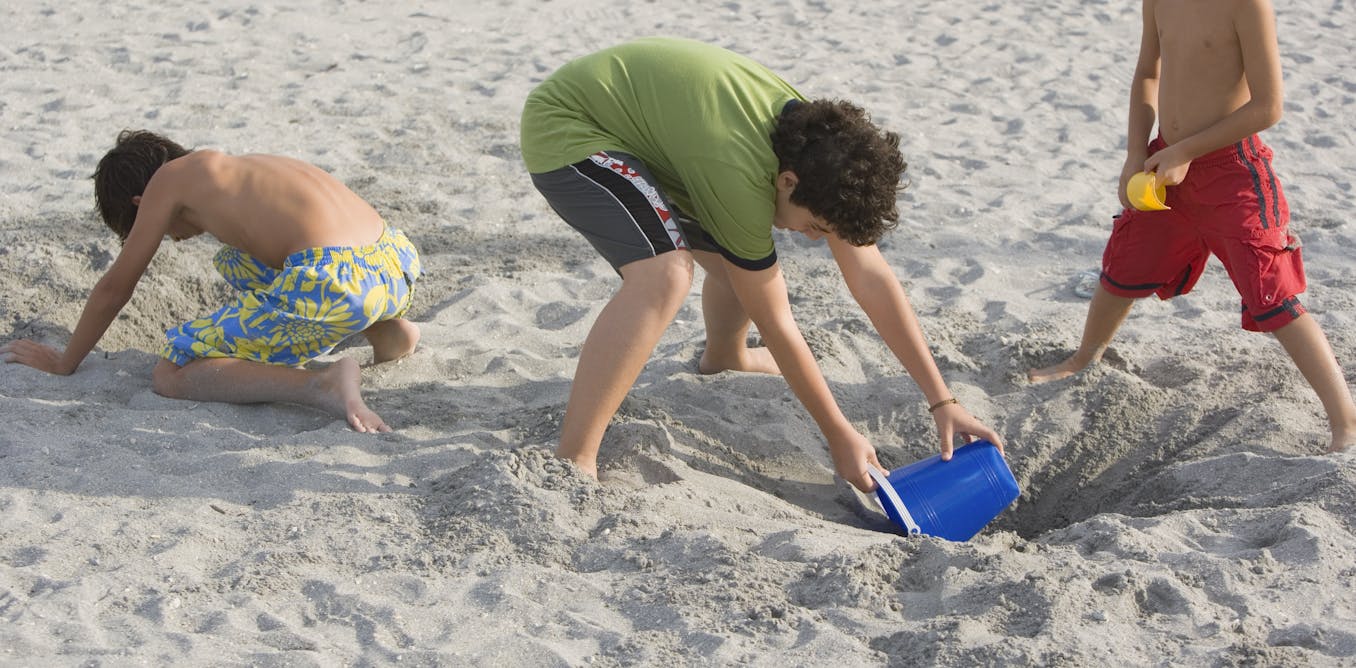Digging holes in sand might seem innocent, but if the hole is deep enough and collapses on a person, it is extremely difficult to escape. In fact, research suggests more people die from sand burial suffocation than from shark attacks.
Sand isn’t actually a type of material. It’s a category of material size, ranging from 0.0025 to 0.08 inches (0.06 to 2 millimeters) in diameter. The type of sand is determined by the materials making it up. Quartz sand, made up of silicon dioxide, is the most common sand found on beaches, except at tropical coasts where coral sand beaches, made up of calcium carbonate, are found.
Material coarser than sand is not soft to the touch – it doesn’t make sturdy sandcastles. Silt and clay, which are finer than sand, make water murky and are commonly called mud.
Sand’s weight depends on the materials it’s made of. Pure quartz sand beaches, which have very white sand, weigh around 90 pounds per cubic foot when dry.
But most beaches contain a mixture of minerals, creating a tan or brown appearance. The minerals that darken the sand are much heavier – sand on most beaches would weigh up to 130 pounds per cubic foot when dry.
Dry, loose grains of sand will form a pile with a slope angle of about 33 degrees, termed its angle of repose. The angle of repose is the steepest angle at which a pile of grains remains stable, and the force of friction between each grain determines that stability.
Sand is more stable when it’s wet because the surface tension between water and sand grains can hold the pile of sand in place vertically. But once it dries, the pile will collapse, as there’s no more surface tension.
So if you dig a hole in the beach, it’ll stay stable for as long as the sand stays moist. Once it dries, the hole collapses.


